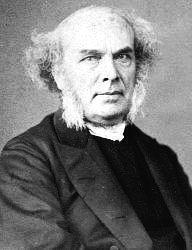Go Ad-Free
If you regularly use Hymnary.org, you might benefit from eliminating ads. Consider buying a Hymnary Pro subscription.
If you regularly use Hymnary.org, you might benefit from eliminating ads. Consider buying a Hymnary Pro subscription.

1 True bread of life, in pitying mercy giv’n,
Long famished souls to strengthen and to feed;
Christ Jesus, Son of God, true bread of Heav’n,
Thy flesh is meat, Thy blood is drink indeed.
2 I cannot famish, though this earth should fail,
Tho’ life through all its fields should pine and die;
Though the sweet verdure should forsake each vale,
And every stream of every land run dry.
3 True tree of life! Of Thee I eat and live,
Who eateth of Thy fruit shall never die;
’Tis Thine the everlasting health to give,
The youth and bloom of immortality.
4 Feeding on Thee, all weakness turns to power,
This sickly soul revives, like earth in spring;
Strength floweth on, and in each buoyant hour,
This being seems all energy, all wing.
5 Jesus, our dying, buried, risen head,
Thy Church’s life and Lord, Immanuel!
At Thy dear cross we find th’eternal bread,
And in Thy empty tomb the living well.
Source: The Cyber Hymnal #7010
 Horatius Bonar was born at Edinburgh, in 1808. His education was obtained at the High School, and the University of his native city. He was ordained to the ministry, in 1837, and since then has been pastor at Kelso. In 1843, he joined the Free Church of Scotland. His reputation as a religious writer was first gained on the publication of the "Kelso Tracts," of which he was the author. He has also written many other prose works, some of which have had a very large circulation. Nor is he less favorably known as a religious poet and hymn-writer. The three series of "Hymns of Faith and Hope," have passed through several editions.
--Annotations of the Hymnal, Charles Hutchins, M.A. 1872… Go to person page >
Horatius Bonar was born at Edinburgh, in 1808. His education was obtained at the High School, and the University of his native city. He was ordained to the ministry, in 1837, and since then has been pastor at Kelso. In 1843, he joined the Free Church of Scotland. His reputation as a religious writer was first gained on the publication of the "Kelso Tracts," of which he was the author. He has also written many other prose works, some of which have had a very large circulation. Nor is he less favorably known as a religious poet and hymn-writer. The three series of "Hymns of Faith and Hope," have passed through several editions.
--Annotations of the Hymnal, Charles Hutchins, M.A. 1872… Go to person page >| First Line: | True Bread of life, in pitying mercy given |
| Title: | The True Bread |
| Author: | Horatius Bonar |
| Language: | English |
| Copyright: | Public Domain |
True Bread of Life, in pitying [ten¬der] mercy given. H. Bonar. [Holy Communion.] Published in hisHymns of Faith and Hope, 2nd series, 1861, in 5 stanzas of 4 lines, and entitled "The True Bread." It is usually given in 4 stanzas and sometimes as "True Bread of Life, in tender mercy given," as in T. Darling's Hymns for the Church of England, 1887.
--John Julian, Dictionary of Hymnology (1907)
True Bread of Life, in pitying [ten¬der] mercy given. H. Bonar. [Holy Communion.] Published in hisHymns of Faith and Hope, 2nd series, 1861, in 5 stanzas of 4 lines, and entitled "The True Bread." It is usually given in 4 stanzas and sometimes as "True Bread of Life, in tender mercy given," as in T. Darling's Hymns for the Church of England, 1887.
--John Julian, Dictionary of Hymnology (1907)


 My Starred Hymns
My Starred Hymns